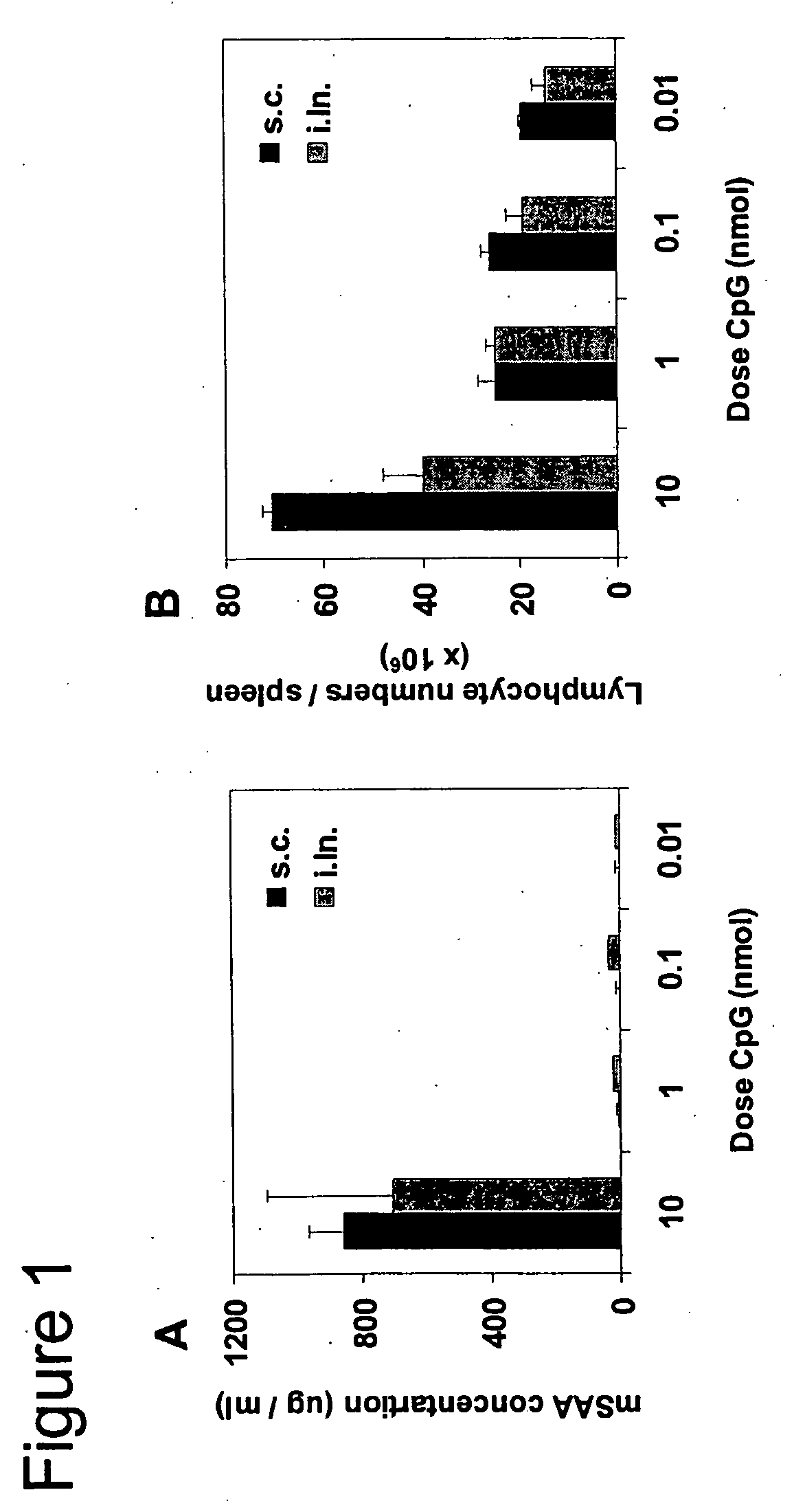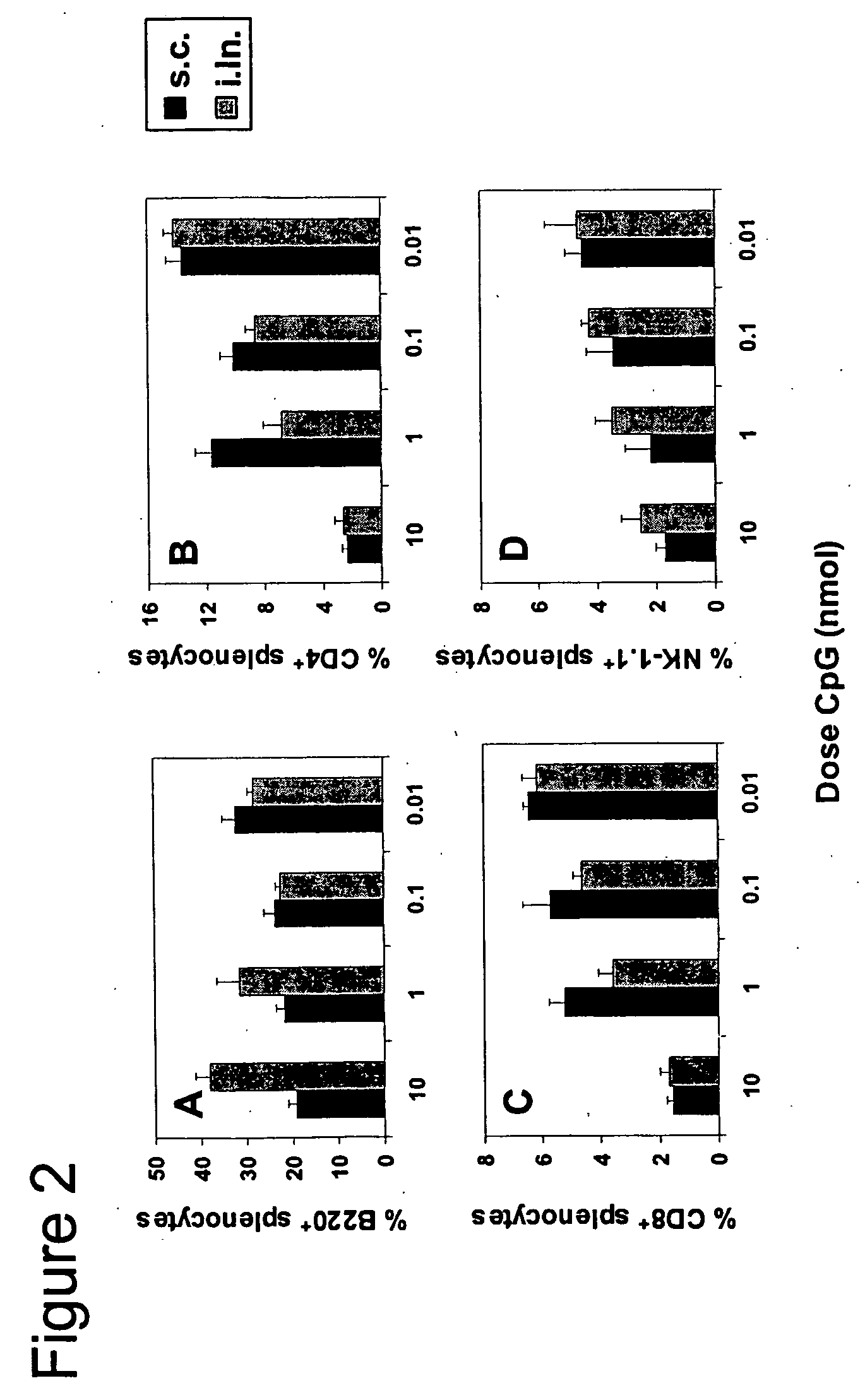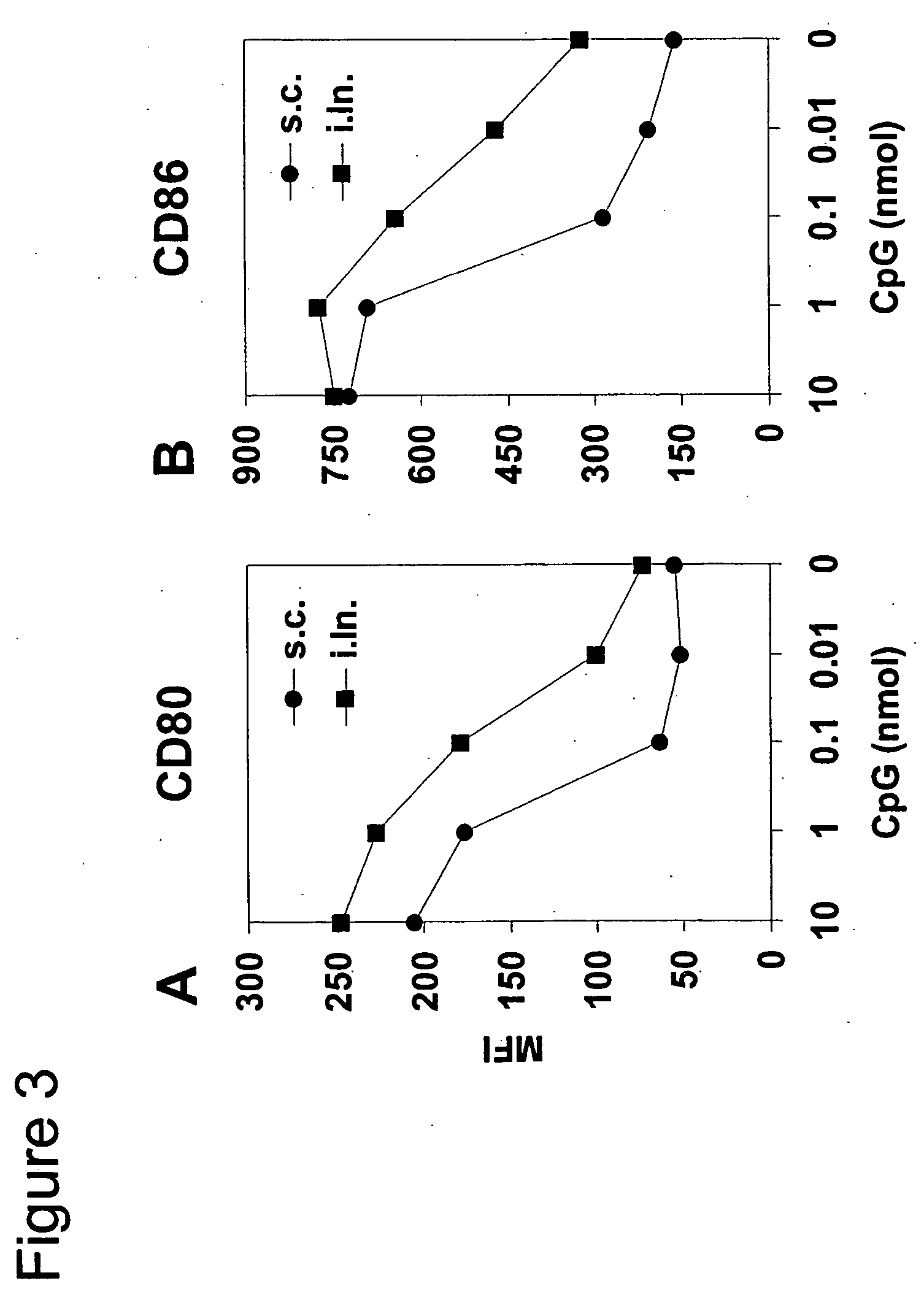Methods to trigger, maintain and manipulate immune responses by targeted administration of biological response modifiers into lymphoid organs
- Summary
- Abstract
- Description
- Claims
- Application Information
AI Technical Summary
Benefits of technology
Problems solved by technology
Method used
Image
Examples
example 1
High Doses of CpGs (10 nmol) Administered Either Subcutaneously or Intralymphatically Induce Significant Acute Phase Response and Splenomegaly
[0084] It is well known that microbial components such as endotoxin and bacterial DNA can induce severe adverse effects, e.g., systemic immune activation, splenomegaly, lymphoadenopathy and septic shock (reviewed in Schmidt, U., H. Wagner, and T. Miethke, “CpG-DNA upregulates the major acute-phase proteins SAA and SAP,”Cell Microbiol 1:61, 1999 (which is incorporated herein in its entirety)). These adverse effects are usually preceded by a so-called acute-phase response that, similar to measuring CRP in humans, can be quantified by measuring the acute phase protein serum amyloid A (SAA). SAA is produced by the liver upon stimulation by proinflammatory cytokines such as IL-1, IL-6, and TNF-α.
[0085] Mice were subcutaneously (s.c.) or intralymphatically (i.ln.) injected with titrated amounts of CpG ODN 1668pt (SEQ. ID. No. 1) (10, 1, 0.1 and 0....
example 2
Intralymphatic Administration of CpG Enhances Activation of Dendritic Cells
[0087] To assess CpG-induced activation of professional APCs, C57BL / 6 mice received titrated amounts of CpG ODN 1668pt either subcutaneously by injection into the inguinal region or by direct injection into the inguinal lymph node. After one day the inguinal lymph nodes were collected and DCs were isolated by Collagenase D digestion and positive isolation using anti-CD11c magnetic beads. Activation of DCs was assessed by measuring up-regulation of CD80 and CD86 (FIGS. 3A and B). Values represent the mean fluorescence intensity (MFI) measured by flow cytometry. As control, mice were immunized i.ln. with saline solution. Lymph node cells pooled from three mice per group were used for the analysis. At least 1.5×104 CD11c+ cells were acquired per condition. High CpG doses of 10 and 1 nmol significantly enhanced expression of CD80 and CD86, regardless of the route of administration. At low CpG doses of 0.1 and 0....
example 3
Cytotoxicity Induced by Ovalbumin Together with Low Amounts of CpG ODN (0.01 nmol) Given Intralymphatically
[0088] The optimal intralymphatic dose of CpG for CTL induction was evaluated and compared to the optimal subcutaneous dose. C57BL / 6 mice were injected with OVA alone or in combination with CpG ODN 1668pt. CD8 T cell responses were tested for direct ex vivo CTL activity seven days later using 51Cr-release assays on EL-4 target cells pulsed with the ovalbumin peptide epitope (SEQ. ID. No. 2) at various effector to target cell ratios. Two dilution series of effector cells per mouse were performed. The means±SEM (n=3) are shown (see FIG. 4). While mice vaccinated intralymphatically showed significant induction of cytotoxic CD8 T cells even at 0.01 nmol CpG, subcutaneous vaccination did not elicit CTL activity in this assay system. The CTL activity was correlated with the frequency of CD8 lymphocytes staining positive for intracellular IFN-γ as measured by flow cytometry (data not...
PUM
| Property | Measurement | Unit |
|---|---|---|
| Mass | aaaaa | aaaaa |
| Mass | aaaaa | aaaaa |
| Mass | aaaaa | aaaaa |
Abstract
Description
Claims
Application Information
 Login to View More
Login to View More - R&D
- Intellectual Property
- Life Sciences
- Materials
- Tech Scout
- Unparalleled Data Quality
- Higher Quality Content
- 60% Fewer Hallucinations
Browse by: Latest US Patents, China's latest patents, Technical Efficacy Thesaurus, Application Domain, Technology Topic, Popular Technical Reports.
© 2025 PatSnap. All rights reserved.Legal|Privacy policy|Modern Slavery Act Transparency Statement|Sitemap|About US| Contact US: help@patsnap.com



